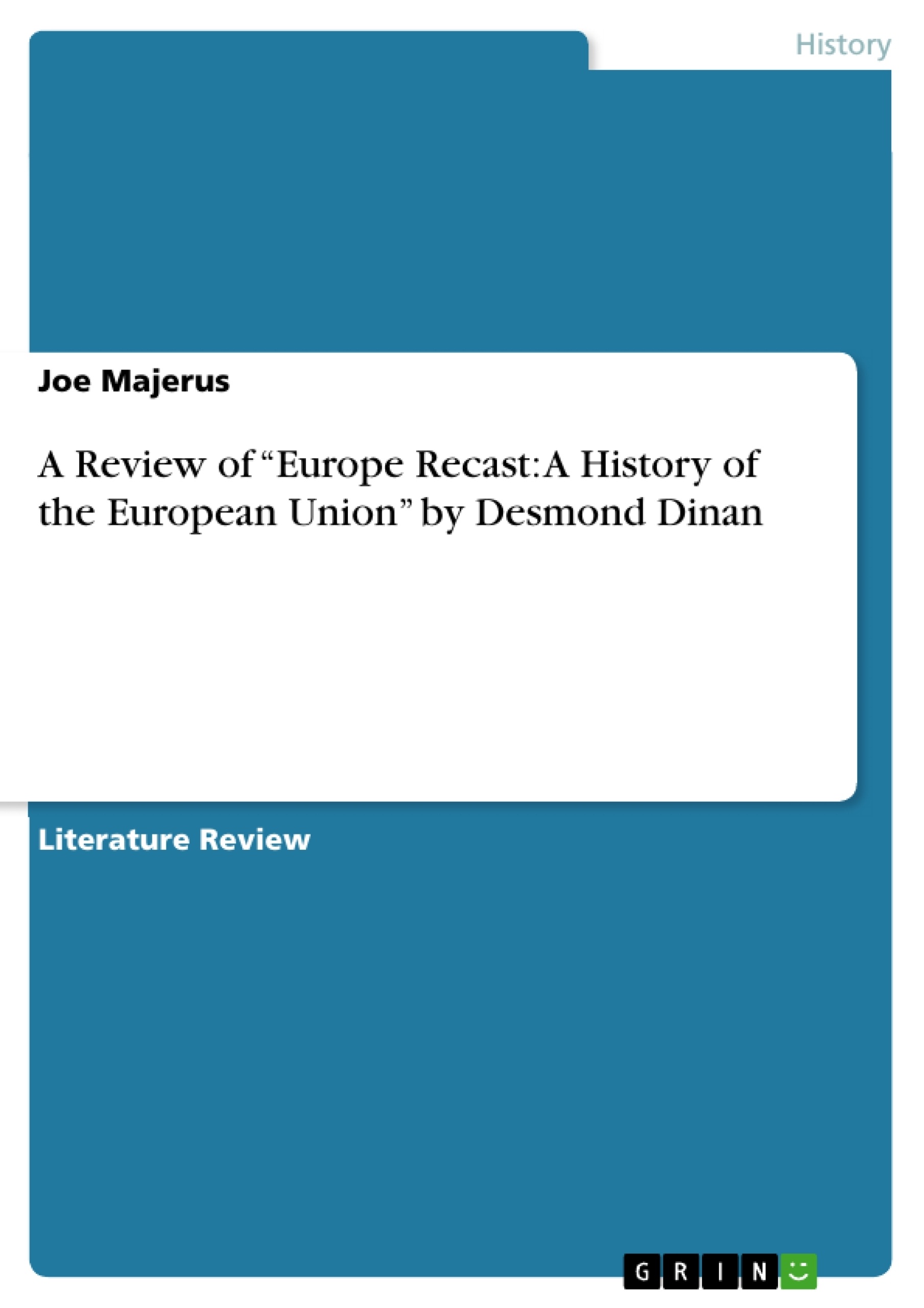A critical and comprehensive review of Desmond Dinan's book on the history of the European integration process.
A Review of “Europe Recast: A History of the European Union”by Desmond Dinan, Palgrave, 2004, 392 pp., £24.99, ISBN 978-0333987346 (pbk)
Europe Recast– A History of European Union by Desmond Dinan is a detailed analysis of how the process of European integration developed from a devastated post-war Europe in 1945 to the modern economical and political institution of the early 21st century, with particular focus on the EC's respectively EU's institutional policies and decision-making.
The book is subdivied into eight principal chapters, each dealing with a specific period or major theme in the EC's history. Each chapter is preceded by a brief thematic introduction along with a general overview of the larger historical context of the time. They each also offer conclusions of the author's intermediate results, in which the depicted events are briefly being summarized and analyzed with regard to their relevance for the EC's development. The reader will, moreover, find a general chronology of the EC's history as well as synopses of its major treaties.
A truly positive aspect of Europe Recast is the fact that the author bases his findings on a vast variety of research papers, publications, articles, technical literature and primary sources. In a separate footnote section at the end of each chapter he meticulously indicates the many works and documents he consulted for each subject; in addition a detailed bibliography can be found at the end of the book. The selected literature is at once sophisticated, well-balanced and differentiated, so that as a result the author is able to draw upon a huge spectrum of resources to substantiate his observations.
Regarding the general goal of Europe Recast, Dinan hopes to make the reader aware that in order to understand Europe, it is above all essential to have a closer look into the general ideas, concepts and developments that shaped the history of European Union. Accordingly, Dinan argues that modern-day Europe is the result of a long and strenuous process of integration, influenced by a number of different factors. Major themes which played a continuing role in the development of both the internal structure and the decision-making of the European Union often revolved around a clash between national interests and a more common federalist approach (Inter-governmentalism vs. Supra-nationalism), a combination of political pragmatism and idealism as well as the influence of individual figures.
The book starts off with a brief overview of previous concepts of European integration in the inter-war period, noting, however, that it was only after the European continent lay in ruins that the imminent need for closer cooperation and integration became apparent. In particular it was the European Recovery Programme (Marshall Plan) which required the European nations to work closer together, notably within the OEEC, followed by further efforts towards European integration at the 1948 Congress of Europe in The Hague. Here, however, a divergence which was to shape much of the integration process in the following decades surfaced: the idea of Euro-federalism and supra-nationalism against an inter-governmental approach aiming to preserve the nation-state while at the same time nevertheless promoting closer cooperation as well.
[...]
- Quote paper
- Joe Majerus (Author), 2010, A Review of “Europe Recast: A History of the European Union” by Desmond Dinan, Munich, GRIN Verlag, https://www.grin.com/document/202288
-

-

-

-
Upload your own papers! Earn money and win an iPhone X. -

-
Upload your own papers! Earn money and win an iPhone X. -

-
Upload your own papers! Earn money and win an iPhone X.

